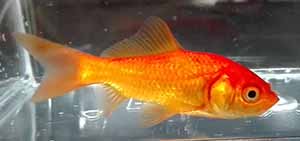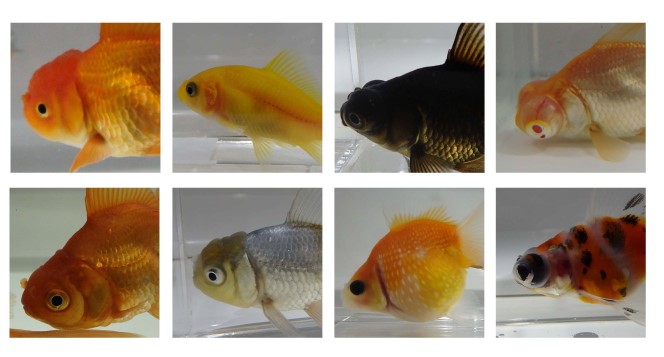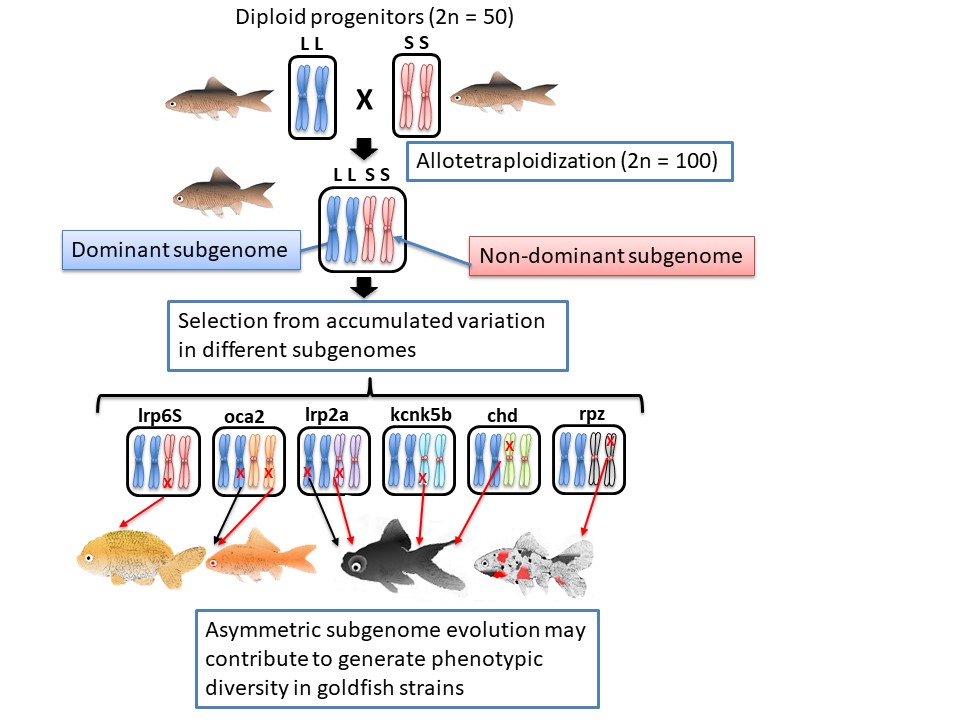■De Novo assembly of the goldfish (Carassius auratus) genome and the genetic basis of morphological diversity in the goldfish strains.
The recent development of next-generation DNA sequencing (NGS) and genome editing technologies has enabled us to study the biological characteristics of non-model organisms. Goldfish (Carassius auratusus) are ornamental teleost fish that were originally domesticated from wild goldfish in China. At least 70 goldfish strains are currently being produced, with phenotypically diverse body shapes, colorations, scales, and fin-, eye-, and hood morphologies that include biologically interesting phenotypes. Certain goldfish strains express phenotypes that are similar to those in some human diseases. Therefore, goldfish serve as suitable model organisms for understanding the molecular basis of vertebrate development and evolution and human diseases. We recently established a high-quality goldfish genome sequence using long-read sequencing technology (Chen & Omori et al., 2019). This investigation provides new tools for the genetic analysis of various goldfish phenotypes. In our laboratory, we focus on the following projects:

Wakin goldfish (common goldfish)
■Understanding the molecular basis of vertebrate development and evolution, as well as the pathogenesis of human diseases, by studying the various phenotypes expressed by goldfish strains.
To elucidate the molecular mechanisms underlying goldfish phenotypes, we crossbreed various goldfish strains and use NGS to analyze the genomic DNA sequences of the offspring. We then use a genome-wide association analysis (GWAS) and functional genome approach that includes bulk/single-cell RNA-seq and ATAC-seq. The gene functions are elucidated using transgenic and genome-edited zebrafish.

Various morphologies of the goldfish strains
Omori and Kon, 2019
■Whole-genome duplication (WGD) and gene evolution in wild goldfish and crucian carp ancestors.
Genomic analyses of goldfish revealed that a WGD event (duplication of all genes in the genome) occurred approximately 14 million years ago in a goldfish ancestor genome. Two rounds of WGD occurred approximately 500 million years ago in vertebrates, including humans. We aim to clarify the mechanism of vertebrate gene evolution post WGD by analyzing gene evolution in the goldfish genome. Additionally, we also study environmental adaptations in wild goldfish and crucian carp.

Goldfish evolution and WGD
Kon et al., 2020

